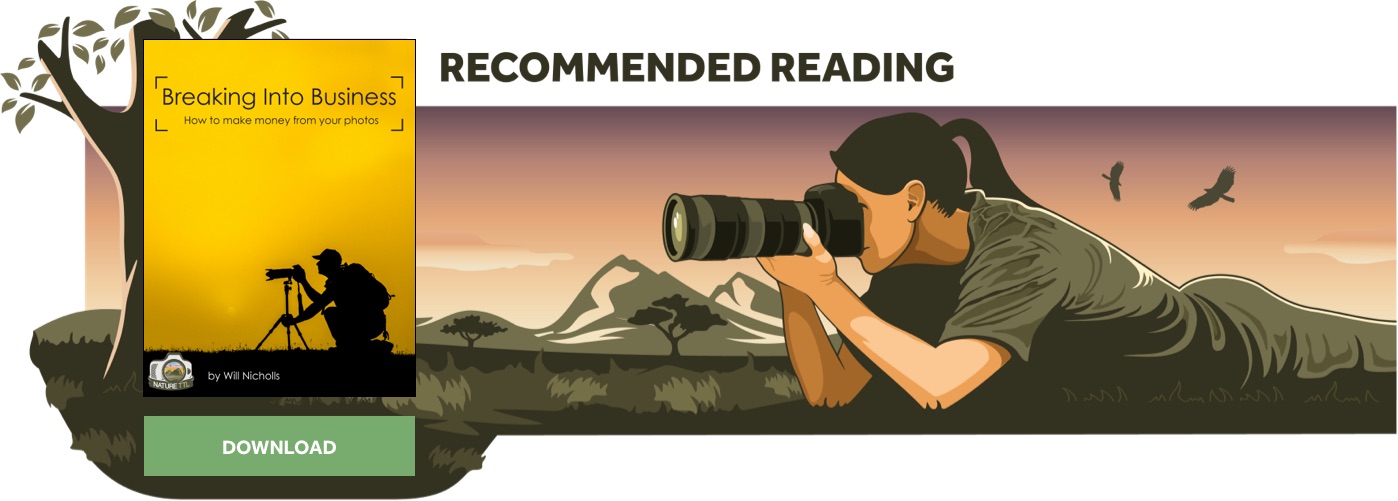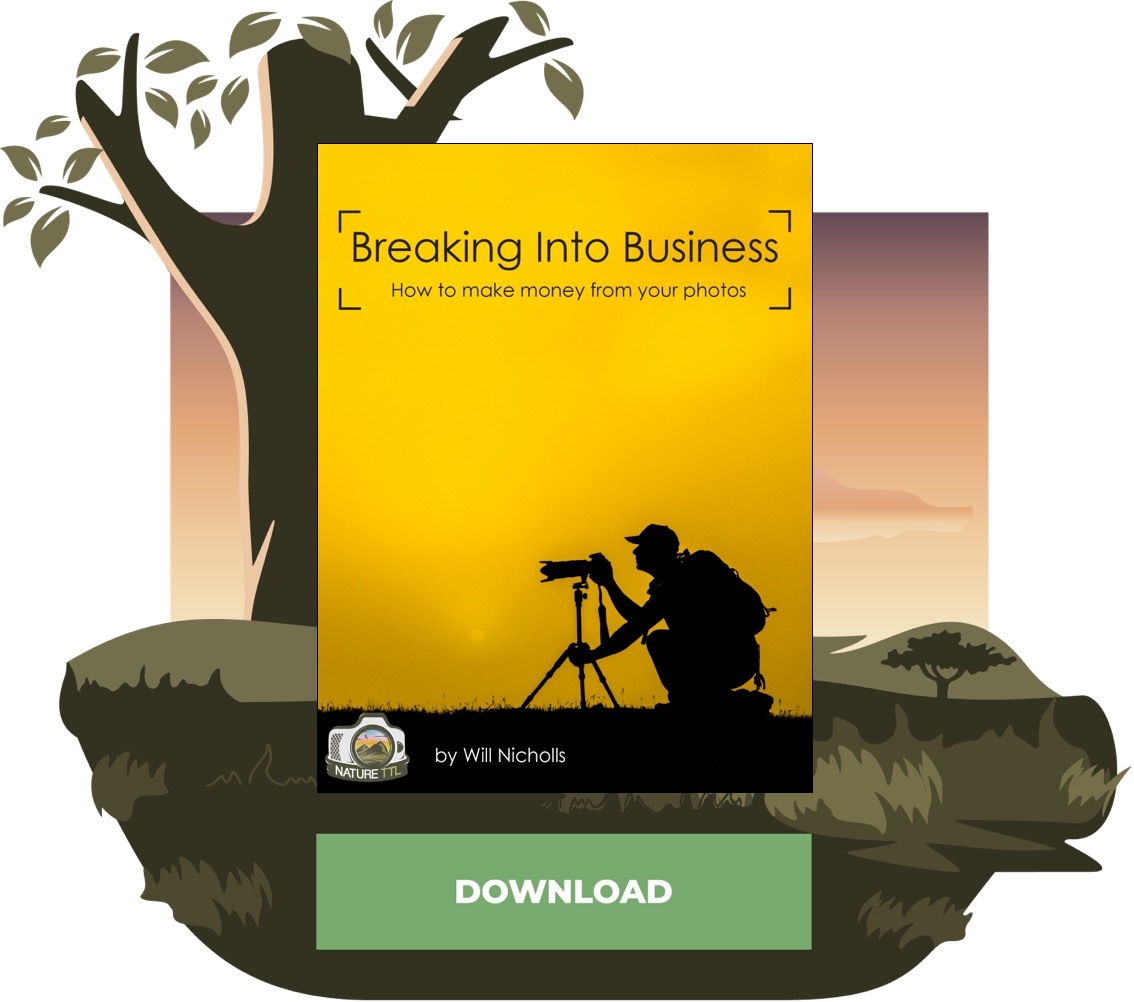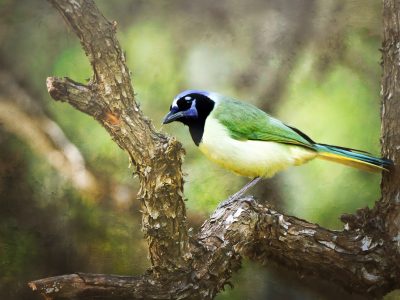Cynthia Bandurek: From Amateur to Professional

In our interview series “From Amateur to Professional” we will be asking established nature photographers to share their photos and see how their practices have developed, changed, and improved over time.
You’ll get to see the progression of their images, learn how they got started, and find out how they transitioned from amateur to professional.


To see more from this series, subscribe to our free newsletter.
Cynthia Bandurek is an Argentinian conservationist and ecologist whose nature photography passionately reflects the beautify and diversity of the natural world.
She has a keen interest in macro subjects, and her captivating portraits bring us one step closer to smaller subjects that are often easily overlooked.
When and why did you first catch the nature photography bug?
My love for nature started as far back as I can remember, but my journey into photography began on a transformative night that changed everything. I was standing in the middle of a sprawling swamp, its murky waters seeping into my trusty rubber boots.

Equipped with my camera – a cherished acquisition I had purchased to document the creatures I was studying during my second calling as a Field Naturalist – I was surrounded by the symphony of the nocturnal world.
That night, I fell in love. I embarked on a journey to capture every living being that crossed my path. While my initial focus was on frogs, I couldn’t resist the allure of nocturnal insects and spiders.
With each shot, a hidden universe revealed itself – a world of intricate details, colors, and behaviors invisible to the naked eye. What I had perceived as a simple black insect turned out, under my lens, to be a kaleidoscope of shimmering hues.

It was humbling and awe-inspiring, a moment that left me in sheer wonder at the intricacies of life.
That night wasn’t just a revelation of the natural world’s hidden beauty; it was the discovery of my path. Through Macro Wildlife Photography, I found a way to channel my passion, biological knowledge, and values.
It became my mission to spotlight the overlooked and underestimated inhabitants of our planet—tiny creatures often deemed insignificant.
Macro photography is more than an art form; it’s a tool for connection and understanding.
By exploring the shimmering hues of a butterfly’s wings, the intricate webbing of spider silk, or the fine hairs on a bumblebee’s legs, we not only celebrate their beauty but also uncover their ecological significance.

This creative pursuit bridges the gap between humanity and these humble creatures, forging emotional and intellectual connections with the power to transform perspectives and attitudes toward Mother Earth.
This technique has even contributed to scientific discovery, helping identify new species of arthropods and furthering our understanding of their roles in ecosystems.
For me, macro photography is a perfect fusion of art and science—a way to highlight the brilliance of the natural world and inspire a deeper appreciation for its wonders.
Show us one of the first images you ever took. What did you think of it at the time compared to now?
Oh, there’s a world of difference between my early photos and the images I create today. Back then (2006), my focus was purely on documenting the animals – a simple act of recording their existence.
Now, my approach has evolved into an art form. It’s about capturing the essence of the creature – their unique personality, the perfect frame, and the most compelling angle that highlights their charisma.

My goal is to present these often-overlooked beings in a way that captivates viewers, challenging them to see these creatures through a new lens.
By showcasing their beauty, complexity, and importance, I aim to inspire a deeper appreciation and a shift in perspective toward the natural world.
Show us one of your favourite photos – it may be your favourite image in general, or of your favourite animal, plant or location! Explain what it means to you.
This is one of my favorite photos, and it holds a special place in my heart. I adore the vibrant yellow of the dandelion, the composition, and, of course, the tiny weevil. These little creatures are fascinating – this particular one measures just a few millimeters.
To the naked eye, it would appear as nothing more than a black speck on the flower, easily mistaken for a piece of debris. But when magnified, its intricate details and unique charm come to life.

This photo is also meaningful because it reflects my early days of macro photography. At the time, I didn’t have a dedicated macro lens. Instead, I used a Sigma 70-300mm telephoto lens combined with a Raynox DCR-250 close-up lens.
This setup was far from expensive or advanced, but it taught me an important lesson: with dedication, practice, and a willingness to learn, you can achieve incredible results, no matter your gear.
For me, this image isn’t just about the weevil or the flower – it’s a reminder of how much beauty exists in the overlooked and the tiny, and how creativity and perseverance can help us capture it.
Are there any species, places, or subjects that you have re-visited over time? Why have you done this? Explain what’s changed in your approach and technique.
Nature, especially in wildlife and every ecosystem, is incredibly dynamic – constantly changing and evolving. You could walk into the same jungle every day and still experience something entirely new.

Different species, unique individuals, varied behaviors, and even changes in the environment itself greet you each time. The jungle is alive – it grows, trees fall, and new spaces emerge, triggering ecological succession and inviting a whole new array of species to thrive.
For me, revisiting a place is not just important – it’s essential. The more time you spend immersed in the same ecosystem, the greater your chances of witnessing its incredible diversity, uncovering unique animal behaviors, and experiencing situations you’d otherwise miss.
Nature rewards patience and persistence with unforgettable moments.
When did you decide you wanted to become a professional photographer? How did you transition into this and how long did it take?
I am an ecologist and field naturalist by profession, with many years of experience working in the field. I’ve always loved the science behind nature – collecting data, studying ecosystems, and contributing to conservation from a scientific perspective.
However, I realized there is often a significant gap between scientific knowledge and the general public, leaving much of the natural world’s beauty and importance untold.

To bridge this gap, I began combining my scientific background with my passion for photography and teaching.
In 2017, while still immersed in the scientific field, I published my first book, The World of Small: An Approach to the Universe of Arthropods from an Artistic, Visual, and Evolutionary Perspective.
This book merges the art of macrophotography with scientific insights, creating a unique way for people to connect with and learn about the fascinating world of arthropods.
My journey then led me to travel across various countries, photographing the incredible diversity of creatures I encountered.

But I soon realized that a month of vacation wasn’t enough to satisfy my deep love for nature and photography. So, I made a bold decision: I moved to Costa Rica to live a life fully immersed in nature and dedicate myself to photography.
Was there a major turning point in your photography career – a eureka moment of sorts?
As I mentioned before, one of the major turning points in my photography career was realizing the significant gap between scientific knowledge and the general public.
That moment was like a revelation – I understood the incredible power of photography and storytelling to bridge that divide, to share compelling stories, and to inspire changes in behaviors and perspectives toward nature.

It was a shift that gave my work a deeper purpose: to not only showcase the beauty of the natural world but also to foster a connection between people and the often-overlooked creatures that inhabit it.
The other transformative moment came when I realized I needed more than fleeting encounters with nature.

At the time, I was living in the bustling city of Buenos Aires, and while I loved traveling to natural areas, a month per year simply wasn’t enough to fulfil the immense connection I craved with the wild.
That realization led me to pursue a life that allows me to be immersed in nature year-round, a decision that shaped not only my career but my entire lifestyle.
Has anything changed about your photography process, for example, your workflow, or how you process and edit your images?
Absolutely, my approach has evolved over time. In the beginning, my focus was simply on documenting the creatures—capturing them as they were. Later, it became about the art of photography, finding ways to make each image more compelling and evocative.

My post-processing has also transformed. At first, I stuck to the basics, but now I love creating a specific mood in my images, especially since I primarily work in rainforest jungles.
The moody style I use reflects the atmosphere of being immersed in the dense, shadowy forest—the feeling of mystery and wonder that bright, flash-heavy photos often fail to convey. My goal is to recreate not just what I see but what I feel when I’m in the heart of the jungle.
What was the biggest challenge you faced starting out, and what’s your biggest challenge now?
The biggest challenge, both in the past and still today, is undoubtedly financial.

Making nature photography a sustainable source of income is challenging for anyone, but coming from Latin America – where even a good salary often pales in comparison to those in developed countries – added another layer of complexity.
This experience forced me to reflect on and transform my relationship with money, learning to view it not just as a limitation but as a tool to achieve my goals and pursue my passion.
Animals, unfortunately, don’t pay for photography, so making this craft profitable requires creativity and diversification. Making a living solely from photographing wildlife is difficult, but I’ve found ways to blend my passions and skills.

My business is built not only on photography but also on my background in biology and science. This dual expertise sometimes opens doors to work that doesn’t involve a camera, as well as commercial photography projects beyond wildlife to help sustain my income.
To diversify further, I’ve developed multiple income streams, including online courses, eBooks, and Lightroom presets tailored to macro photography enthusiasts.
I lead photography workshops and guide tourists and photographers through natural areas, sharing the wonders of the small world and the stories of the forest while teaching ethical photography practices.
I also write articles on photography and scientific topics, bridging my passions for storytelling and education. Additionally, I contribute as an Event Coordinator for The Nature Photographers Network, where I engage with a larger community of like-minded creatives.

Another layer of difficulty comes from living in a country that is not my own. While I’m grateful for the opportunities I’ve had, adapting to a new culture, building a network from scratch, and navigating the challenges of not having a strong local support system can be overwhelming at times.
Yet, these challenges have also pushed me to grow, teaching me resilience, adaptability, and the value of stepping outside my comfort zone.
Another significant hurdle has been overcoming language barriers to expand the reach of my work. Learning a new language has been a long and ongoing journey, one that has pushed me far out of my comfort zone as well.
Appearing on podcasts in English, for example, was initially intimidating. I knew I would make mistakes, but I trusted that taking those risks would help me connect with wider audiences and amplify my message.
What’s the one piece of advice that you would give yourself if you could go back in time?
If I could go back in time, I would tell myself to trust more in my abilities – to believe in my capacity to leave my comfort zone, adapt, and thrive.

I wish I had found the courage to take the leap sooner, to follow my deep love for nature without hesitation. But I’ve also learned that everything unfolds in its own time. The truth is, we’re ready when we’re ready, and every step of the journey has its purpose.
If there’s anything else you feel compelled to share about your photography journey, please feel free to do so here!
My photography journey has been more than a career—it’s been a path of personal growth, healing, and connection with the world around me. Through this work, I’ve come to understand the deep interconnectedness of life and the power of small actions to create ripples of change.
I’ve learned that photography isn’t just about capturing moments; it’s about creating bridges – between people and nature, between art and science, and even between our individual experiences and the collective story of our planet. This craft has taught me patience, resilience, and the ability to see beauty in the most unexpected places.

Looking back, I’m immensely grateful for the challenges I’ve faced along the way. They’ve pushed me to grow, to innovate, and to redefine what’s possible.
From the financial hurdles of building a sustainable business to adapting to life in a foreign country and learning a new language, every obstacle has become a stepping stone to where I am today.
Most importantly, I hope my journey inspires others to look closer, to care more deeply, and to act with intention. Whether you’re a photographer, a scientist, or simply someone who loves the natural world, we all have a role to play in protecting the planet and celebrating its wonders.
To those who are just starting out or contemplating their own leap of faith, I’d say this: Trust in your unique perspective and the power of your passion. Let your curiosity guide you, and don’t be afraid to dream big.
Photography has shown me that even the smallest subjects can have the most profound impact – and the same is true for all of us.





